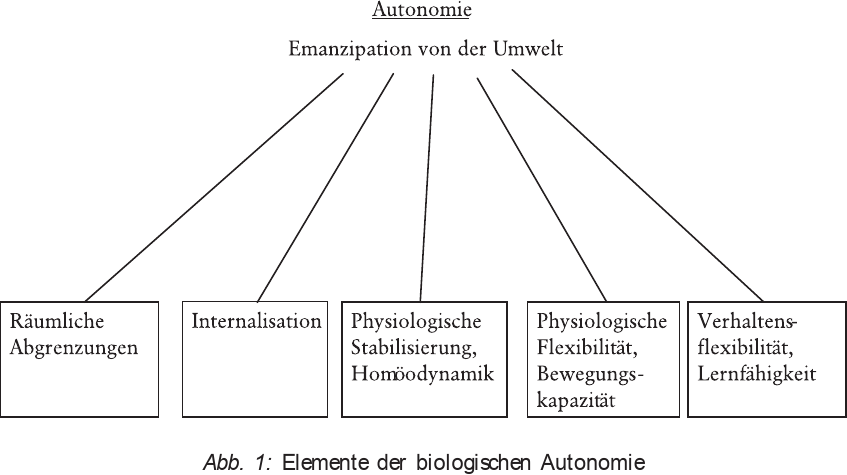Zur Evolution der organismischen Autonomie
Teil 1: Begriffsbestimmung und das Beispiel der Entstehung der Metazoen
Export Article Citation as
- Plain text
- BibTeX
- RIS format
- Download price : € 6.00
Abstract:
A theory is advanced that the generation of multicellular animals in early evolution leads to an emancipation from the environment and to an increase of organismic autonomy. Increasing autonomy is defined as a shift in the system-environment relation so that the direct influences of the environment are gradually reduced and a stabilization of self-referential, intrinsic functions within the system is generated. This is described as a relative autonomy, while, at the same time, numerous interconnections with and dependencies on the environment are retained. Elements of an increasing autonomy are spatial separations, increase of homeostatic functions, internalizations and increase in physiological and behavioural flexibility.
Part one first gives a brief overview of the concept of autonomy in literature, followed by a new definition of the notion of organismic autonomy. As an example, these principles are then described for the transition from single cells to metazoans. Part two, which will be published in the next issue of Elemente, contains a detailed discussion of the extant most primitive metazoans with respect to the evolition of autonomy. Finally the theory and some of its consequences are discussed.




